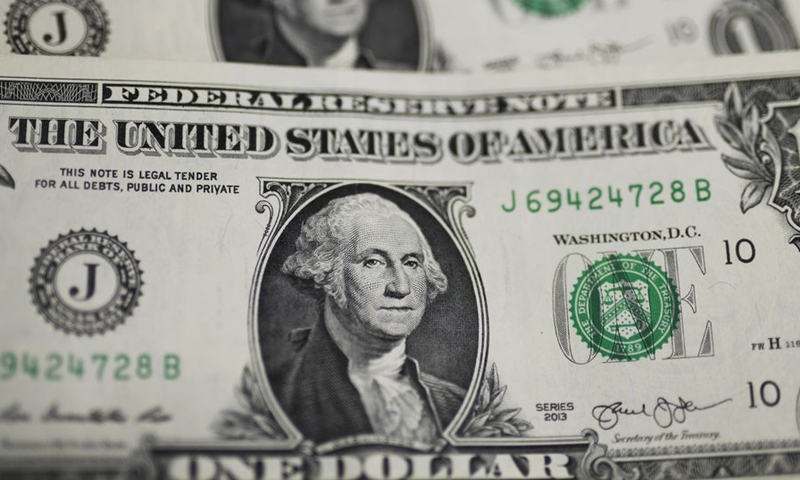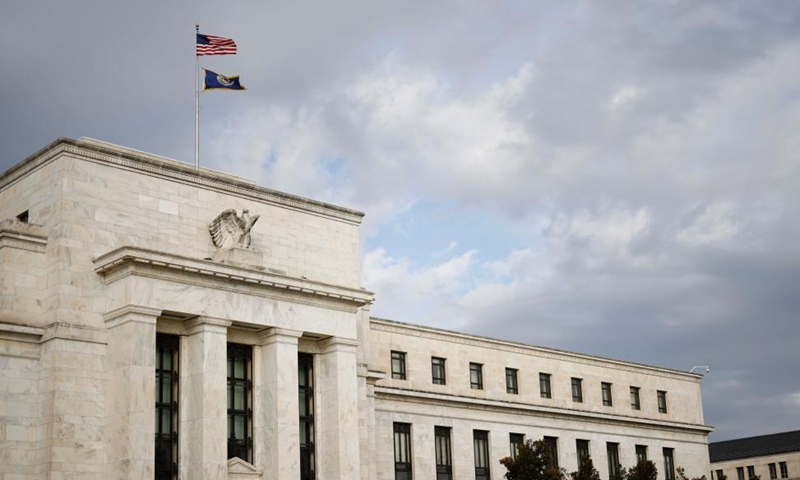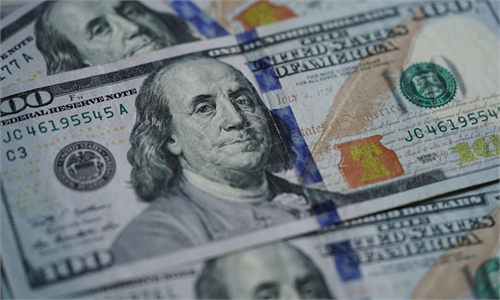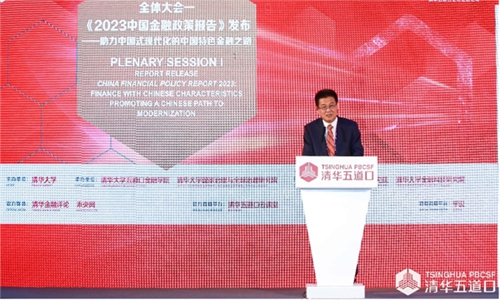
Photo taken on September 18, 2019 shows US dollar banknotes in Washington DC, the S. File photo: Xinhua
While the "super week of central bank meetings" kicks off and the market expects a final interest rate hike in the Fed's current tightening cycle, the economic woes in the US are far from ending while the world's largest economy continues to put developing economies at risk, experts said on Tuesday.
The US Fed will raise its benchmark overnight interest rate by 25 basis points to the 5.25-5.50 percent range on Tuesday (US time), which is widely expected to be the last of the rate hiking cycle, according to a recent Reuters poll.
The Fed in June left interest rates unchanged after 10 consecutive hikes since last year to give policymakers time to "assess additional information."
Data released later in June showed that US consumer price inflation (CPI) increased by 3 percent on a yearly basis, dropping to its lowest level in more than two years. However, stripping out volatile food and energy prices, the core CPI rose 4.8 percent, which maintains well above the ideal 2 percent level.
"The US inflation rate has been on a declining trajectory after recent rate hikes, however, the nation's economy is still facing recession risks," Hu Qimu, a deputy secretary general of the digital real economies integration Forum 50, told the Global Times.
It remains uncertain whether inflation will return to normal or a recession will come first, and it may last until the end of the year to get a clearer picture, Hu said.
The US economy is expected to remain resilient in the short term on the back of relatively abundant liquidity, but the high level of interest rates will continue to erode economic momentum and push the US into recession, Ming Ming, chief macroeconomist at CITIC Securities, told the Global Times.
The signal of liquidity tightening has already shown up with declining loan growth rates and interest rates gradually approaching the growth rates of household income, Ming noted.
As interest rates further increase and remain at a high level, corporate capital runs out and loan demand is forced to increase, labor demand will decline, which will further weaken the US labor market and finally lead to the loss of resilience of the US economy, Ming said.
The aggressive US campaign of interest rate hikes and its economic policies have cast shadows over the global economy, especially developing countries, experts said.
"With the economic locomotive still lukewarm, many developing economies, which have developed a dependency on exports to advanced economies, will be under mounting pressure," said Yu Xiang, a senior fellow at Center for International Security and Strategy, Tsinghua University.
While the outlook is uncertain, it's actually in the US' best interest as capital may flee from emerging markets and flow into the US, Yu told the Global Times.

Photo taken on Jan 25, 2022 shows the US Federal Reserve in Washington, DC, the US. Photo:Xinhua
A recent IMF report said that appreciation of the US dollar had harder negative spillovers, especially for economic activity and imports, on emerging market economies than on developed economies.In emerging market economies, a 10 percent dollar appreciation, linked to global financial market forces, decreases GDP output by 1.9 percent after one year, and this drag is expected to linger for two and a half years.
The negative effects on advanced economies are considerably smaller, with output reduction peaking at 0.6 percent after one quarter and largely gone in a year, IMF data showed.



